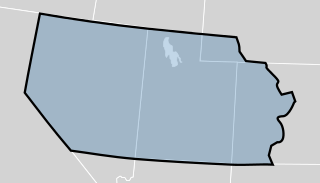 W
WThe Territory of Utah was an organized incorporated territory of the United States that existed from September 9, 1850, until January 4, 1896, when the final extent of the territory was admitted to the Union as the State of Utah, the 45th state. At its creation, the Territory of Utah included all of the present-day State of Utah and portions of the present-day states of Nevada, Colorado, and Wyoming.
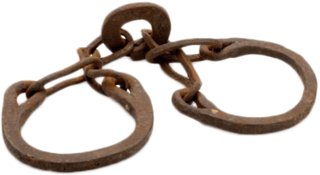 W
WThe Act in Relation to Service, which was passed on Feb 4, 1852 in the Utah Territory, made slavery legal in the territory. A similar law, Act for the relief of Indian Slaves and Prisoners was passed on March 7, 1852, and specifically dealt with Indian slavery.
 W
WThe Territory of Arizona was a territory of the United States that existed from February 24, 1863 until February 14, 1912, when the remaining extent of the territory was admitted to the Union as the state of Arizona. It was created from the western half of the New Mexico Territory during the American Civil War.
 W
WThe Black Hawk War, or Black Hawk's War, is the name of the estimated 150 battles, skirmishes, raids, and military engagements taking place from 1865 to 1872, primarily between Mormon settlers in Sanpete County, Sevier County and other parts of central and southern Utah, and members of 16 Ute, Southern Paiute, Apache and Navajo tribes, led by a local Ute war chief, Antonga Black Hawk. The conflict resulted in the abandonment of some settlements and hindered Mormon expansion in the region.
 W
WThe Compromise of 1850 was a package of five separate bills passed by the United States Congress in September 1850 that defused a political confrontation between slave and free states on the status of territories acquired in the Mexican–American War. It also set Texas's western and northern borders and included provisions addressing fugitive slaves and the slave trade. The compromise was brokered by Whig senator Henry Clay and Democratic senator Stephen Douglas with the support of President Millard Fillmore.
 W
WThe Council House, often called the State House, was the first public building in Utah; being constructed in 1849–50. The building stood in Salt Lake City, Utah Territory, on the corner of Main Street and South Temple Street. On June 21, 1883 the building was destroyed when a neighboring wagon depot caught fire and several barrels of gunpowder exploded, spreading the fire to the Council House.
 W
WCove Fort is a fort, unincorporated community, and historical site located in Millard County, Utah. It was founded in 1867 by Ira Hinckley at the request of Brigham Young. One of its distinctive features is the use of volcanic rock in the construction of the walls, rather than the wood used in many mid-19th-century western forts. This difference in construction is the reason it is one of very few forts of this period still surviving.
 W
WThe International Society Daughters of Utah Pioneers is a women's organization dedicated to preserving the history of the original settlers of the geographic area covered by the State of Deseret and Utah Territory, including Mormon pioneers. The organization is open to any woman who is: (1) A direct-line descendant or legally adopted direct-line descendant with a pioneer ancestor; (2) the pioneer ancestor is a person who traveled to or through the geographic area covered by the State of Deseret/Utah Territory between July 1847 and 10 May 1869 ; (3) over the age of eighteen, and of good character. Travel through the geographic area covered by the State of Deseret/Utah Territory can be either east to west, west to east, north to south, or south to north.
 W
WThe Edmunds Act, also known as the Edmunds Anti-Polygamy Act of 1882, is a United States federal statute, signed into law on March 23, 1882 by president Chester A. Arthur, declaring polygamy a felony in federal territories. The act is named for U.S. Senator George F. Edmunds of Vermont. The Edmunds Act also prohibited "bigamous" or "unlawful cohabitation", thus removing the need to prove that actual marriages had occurred. The act not only reinforced the 1862 Morrill Anti-Bigamy Act but it also made the offense of unlawful cohabitation much easier to prove than polygamy misdemeanor and made it illegal for polygamists or cohabitants to vote, hold public office, or serve on juries in federal territories.
 W
WThe Edmunds–Tucker Act of 1887 was an Act of Congress that focused on restricting some practices of The Church of Jesus Christ of Latter-day Saints. An amendment to the earlier Edmunds Act, it was passed in response to the dispute between the United States Congress and the LDS Church regarding polygamy. The act is found in US Code Title 48 & 1461, full text as 24 Stat. 635, with this annotation to be interpreted as Volume 24, page 635 of United States Statutes at Large. The act is named after its congressional sponsors, Senator George F. Edmunds of Vermont and Congressman John Randolph Tucker of Virginia.
 W
WFort Cameron was a United States Military installation, located east of Beaver, Utah.
 W
WFort Deseret is a former fort located in northeastern Millard County, Utah, United States, just south of Deseret.
 W
WCamp Douglas was established in October 1862, during the American Civil War, as a small military garrison about three miles east of Salt Lake City, Utah, to protect the overland mail route and telegraph lines along the Central Overland Route. In 1878, the post was renamed Fort Douglas. It was officially closed in 1991 pursuant to BRAC action and most of the buildings were turned over to the University of Utah. A small section of the original fort is still used by the U.S. Army Reserve and includes the Fort Douglas Military Museum. The fort was designated a National Historic Landmark in 1975, for its role in the Civil War and in furthering the settlement of Utah.
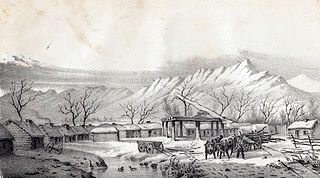 W
WFort Utah was the original settlement at Provo, Utah, United States and was established March 12, 1849. The original settlers were President John S. Higbee, and about 30 families or 150 persons that were sent from Salt Lake City to Provo by President Brigham Young. Several log houses were erected, surrounded by a 14-foot (4.3 m) palisade 20 by 40 rods in size, with gates in the east and west ends, and a middle deck, for a cannon. The fort was first located west of town, but was moved to Sowiette Park in April, 1850.
 W
WThe golden spike is the ceremonial 17.6-karat gold final spike driven by Leland Stanford to join the rails of the First Transcontinental Railroad across the United States connecting the Central Pacific Railroad from Sacramento and the Union Pacific Railroad from Omaha on May 10, 1869, at Promontory Summit, Utah Territory. The term last spike has been used to refer to one driven at the usually ceremonial completion of any new railroad construction projects, particularly those in which construction is undertaken from two disparate origins towards a common meeting point. The spike is now displayed in the Cantor Arts Center at Stanford University.
 W
WThe Territory of Jefferson was an extralegal and unrecognized United States territory that existed from October 24, 1859 until the creation of the Colorado Territory on February 28, 1861. The Jefferson Territory included land officially part of the Kansas Territory, the Nebraska Territory, the New Mexico Territory, the Utah Territory, and the Washington Territory, but the area was remote from the governments of those five territories. The government of the Jefferson Territory, while democratically elected, was never legally recognized by the United States government, although it managed the territory with relatively free rein for 16 months. Many of the laws enacted by the Jefferson Territorial Legislature were reenacted and given official sanction by the new Colorado General Assembly in 1861.
 W
WThe Late Corporation of the Church of Jesus Christ of Latter-Day Saints v. United States, 136 U.S. 1 (1890), was a Supreme Court case that upheld the Edmunds–Tucker Act on May 19, 1890. Among other things, the act disincorporated The Church of Jesus Christ of Latter-day Saints.
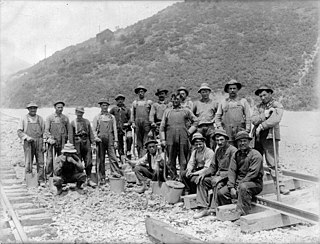 W
WThe Liberal Party was a political party established in the latter half of the 1800s in Utah Territory before the national Democrats and Republicans established themselves in Utah in the early 1890s.
 W
WThe Morrill Anti-Bigamy Act was a federal enactment of the United States Congress that was signed into law on July 8, 1862 by President Abraham Lincoln. Sponsored by Justin Smith Morrill of Vermont, the act banned bigamy in federal territories such as Utah and limited church and non-profit ownership in any territory of the United States to $50,000.
 W
WThe Territory of Nevada (N.T.) was an organized incorporated territory of the United States that existed from March 2, 1861, until October 31, 1864, when it was admitted to the Union as the State of Nevada.
 W
WThe People's Party was a political party in Utah Territory during the late 19th century. It was backed by The Church of Jesus Christ of Latter-day Saints and its newspaper, the Deseret News. It opposed Utah's Liberal Party.
 W
WThe Poland Act of 1874 was an act of the United States Congress which sought to facilitate prosecutions under the Morrill Anti-Bigamy Act by eliminating the control members of The Church of Jesus Christ of Latter-day Saints exerted over the justice system of Utah Territory. Sponsored by Senator Luke P. Poland of Vermont, the Act redefined the jurisdiction of Utah courts by giving the United States district courts exclusive jurisdiction in Utah Territory over all civil and criminal cases. The Act also eliminated the territorial marshal and attorney, giving their duties to a U.S. Marshal and a U.S. Attorney. The Act also altered petit and grand jury empaneling rules to keep polygamists off juries. By removing Latter-day Saints from positions of authority in the Utah justice system, the Act was intended to allow for successful prosecutions of Mormon polygamists.
 W
WThe Powell Geographic Expedition of 1869, led by American naturalist John Wesley Powell, was the first thorough cartographic and scientific investigation of long segments of the Green and Colorado rivers in the southwestern United States, including the first recorded passage of white men through the entirety of the Grand Canyon. The expedition, which lasted approximately three months during the summer of 1869, embarked from Green River Station, Wyoming Territory and traveled downstream through parts of the present-day states of Colorado, Utah, and Arizona before reaching the confluence of the Colorado and Virgin rivers in present-day Nevada. Despite a series of hardships, including losses of boats and supplies, near-drownings, and the eventual departures of several crew members, the voyage produced the first detailed descriptions of much of the previously unexplored canyon country of the Colorado Plateau.
 W
WThe Salt Creek Canyon massacre occurred on June 4, 1858, when four Danish immigrants were ambushed and killed by unidentified Indians in Salt Creek Canyon, a winding canyon of Salt Creek east of present-day Nephi, in Juab County, Utah.
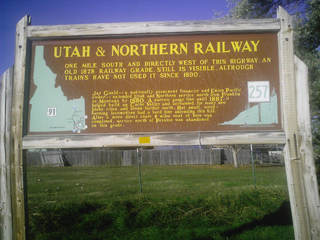 W
WThe Utah & Northern Railway is a defunct railroad that was operated in the Utah Territory and later in the Idaho Territory and Montana Territory in the western United States during the 1870s and 1880s. It was the first railroad in Idaho and in Montana.
 W
WChief Walkara was a Shoshone leader of the Utah Indians known as the Timpanogo and Sanpete Band. It is not completely clear what cultural group the Utah or Timpanogo Indians belonged to, but they are listed as Shoshone. He had a reputation as a diplomat, horseman and warrior, and a military leader of raiding parties, and in the Wakara War.
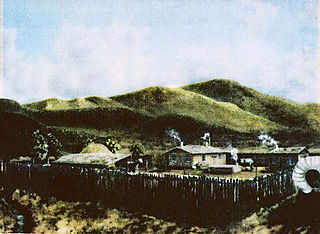 W
WWillden Fort was a wooden-palisade fort constructed on Cove Creek in Utah in 1860 by Charles William Willden and his son Ellott. It was occupied from 1860 to 1865, abandoned, then occupied briefly in 1867 during the construction of Cove Fort.